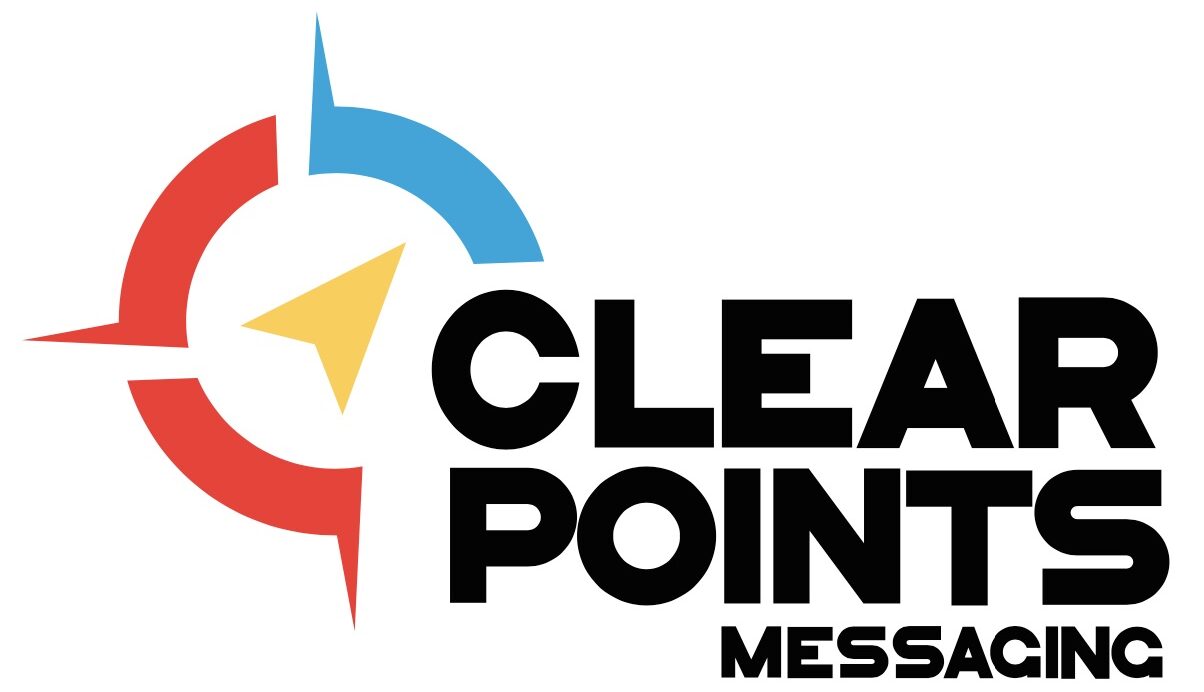

Metaphors are bridges that connect complex ideas with the familiar, making abstract concepts accessible. Metaphors can enrich strategic messaging, but without enough thought, they can also have unintended interpretations.
This blog covers three topics:
- A warning about metaphors through an example.
- Simple directions on ow to create a good metaphor.
- Some examples of metaphors.
Introduction: Communicators Love Metaphors
Just as a king or queen in the Feudalism era held power, influence, and command over their domain, a metaphor reigns supreme in communication.
It sits atop the hierarchy of communication tools that can convey complex ideas simply, and stir emotions in the hearts of its audience.
👆This is an example of a metaphor. Often, metaphors are not completely true, but you can get a major point across from them.
In this case, metaphors are significant in a strategic and leadership communication toolkit.
Metaphors are more than literary devices; they are essential for clear and effective communication.
By drawing on everyday experiences and observations, you can create metaphors that resonate deeply with your audience, making your messages more memorable and impactful.
Dangers of Using Metaphors in Business
Metaphors are used prominently in social issues and politics. As communicators who work at large businesses and own small businesses, we can learn from it.
If metaphors are not thought through, you can send the wrong message to your audience and have unintended meanings.
- Misleading Comparisons: Metaphors can simplify complex issues too much, neglecting the human element and the intricacies involved.
- Unintended Messages: Metaphors may carry a “shadow side” that conveys unintended, sometimes negative connotations.
- Exclusive Messaging: Taken to their logical end, metaphors can foster exclusivity, sidelining or marginalizing certain groups.
Critical reflection is needed when using metaphors, especially in contexts affecting humans.
Gentrification: A Case Study from Ohio
In his insightful book “Culture, Social Class, and Race in Public Relations: Perspectives and Applications,” Damion Waymer offers a compelling analysis of how metaphors influence our understanding of urban renewal efforts. He examines the case of a neighborhood in Ohio grappling with challenges such as poverty, crime, and police brutality—a community at the crossroads of significant social and economic pressures.
City officials described the neighborhood’s need for “revitalization” and “salvation,” seemingly positive objectives aimed at improving living conditions. However, Waymer identifies a shadow side to this metaphor when using “reviving” or “cleansing.”
This metaphor subtly implies that the neighborhood—and, by extension, its residents—must be purged of its “diseased” elements to foster growth and renewal.
The Implications
This metaphor positions the current residents as unintegral stakeholders in the neighborhood’s future but as obstacles to its development.
The language of “revival” and “cleansing” suggests prioritizing the physical space—the real estate—over the well-being and inclusion of the people who inhabit it.
Essentially, the metaphor communicates a message that the city’s objective is to save the land, not the individuals who call it home.
While the intention behind urban revitalization efforts is often positive, the language employed can inadvertently marginalize those it aims to help, framing them as problems to be solved rather than partners in progress.
How Do We Make a Good Metaphor?
The key is to bridge the gap between the familiar and the unfamiliar, making complex ideas more accessible and engaging. Here’s a step-by-step approach with examples to help you create metaphors that resonate:
Prompts to Help You Craft Your Metaphor
- What is the essence of the concept or issue I’m trying to convey?
- What familiar objects, situations, or processes share similarities with this concept?
- How can I creatively link these two to shed new light on my concept?
- What emotions or actions do I want to evoke in my audience with this metaphor?
Crafting Your Own Metaphor:
1. Identify Your Core Concept:
What idea or principle do you want to talk about?
My Example: content for a website
—
Start by pinpointing the idea you want to illuminate. Think in abstract terms rather than literal descriptions to avoid making your metaphor too literal.
Avoid choosing overly literal comparisons. For example, while discussing “innovation,” remember it’s not a literal seed but can share a seed’s growth potential in the right environment.
2. Find a Relatable Element:
What familiar object or situation could parallel your concept? If you get stuck, start thinking of nouns.
Example: We will use a tree on a riverbank for this metaphor.
—
Look for something familiar to your audience that shares underlying characteristics with your core concept. This element should resonate emotionally or experientially with your audience.
Don’t pick a relatable element that’s too obscure or complex. The metaphor will lose effectiveness if your audience can’t connect immediately.
3. Brainstorm on characteristics:
From our Example a tree’s characteristics:
- Deep roots.
- Old
- Roots keep the river bank from eroding
- Also helps the flow of water
4. Link the Abstract and the Familiar:
How does your chosen element reflect the nuances of your core concept?
Just link characteristics together and think of how they can be connected.
Example from content and tree metaphor:
- Content on a website are the roots on a river bank. It allows traffic to flow in a specific direction.
- It also keeps the river bank from eroding, so the water doesn’t lose direction.
- You’re content can grow old if it is healthy and also have deep roots.
Not the best but also not the worst.
—
Draw a clear connection between your abstract concept and the chosen familiar element. This is where the magic of metaphor happens, bridging the gap between the complex and the comprehensible.
Resist the temptation to overexplain. The power of a metaphor lies in its ability to convey deep insights succinctly. Over-elaboration can dilute its impact.
5. Refine for Clarity and Impact:
Can you make your metaphor more vivid or emotionally engaging?
—
Ensure your metaphor is as clear and vivid as possible. A well-crafted metaphor should evoke imagery and emotions that underscore your message.
Avoid mixed metaphors that can confuse the narrative. Stick to one strong, cohesive comparison that carries your idea from start to finish.
Test Your Metaphor:
Does your metaphor resonate? Would it be clear to your audience?
Evaluate whether your metaphor makes the concept easier to understand. If it doesn’t resonate or clarify as intended, consider revising or selecting a different familiar element.
Don’t ignore feedback that your metaphor is confusing or misses the mark. A metaphor that doesn’t work for your audience fails its primary function.
Examples of Metaphors
To bring our exploration of metaphors full circle, let’s look at some vivid examples that span different realms of thought and expression. These examples are intended to inspire you to craft your own metaphors, illuminating your messages and connecting with your audience on a deeper level.
1. The Journey of Life
“Life is a journey, with problems to solve, lessons to learn, but most of all, experiences to enjoy.” This metaphor compares life to a journey, emphasizing its nature as a path filled with challenges, learning opportunities, and the joy of experiences. It suggests that, much like a journey, life is not just about the destination but the journey itself—the experiences we gather and the lessons we learn.
2. Information as Light
“In today’s world, information is the light that illuminates our path forward.” Here, information is likened to light, suggesting that just as light dispels darkness and allows us to see clearly, information dispels ignorance, enlightening our decisions and guiding our actions in a world that can often be confusing and opaque.
3. The Internet as a Global Village
“The Internet has transformed our world into a global village.” This metaphor describes the internet’s role in shrinking global distances, making it possible for people worldwide to connect as if they were neighbors in a small village. It highlights the Internet’s ability to foster communication and understanding across geographical and cultural boundaries.
4. Emotional Walls
“He built walls around his heart to protect himself from getting hurt again.” This metaphor depicts emotional vulnerability and self-protection through the imagery of building walls. It conveys the idea of someone becoming emotionally guarded to prevent further pain, using the physical act of constructing walls as a symbol for the emotional barriers we erect.
5. The Mind as a Garden
“Your mind is a garden, your thoughts are the seeds; you can grow flowers, or you can grow weeds.” This metaphor compares the mind to a garden and thoughts to seeds, illustrating that the quality of our thoughts determines the quality of our mental and emotional lives. Just as a garden requires care and attention, our minds thrive on positive, nurturing thoughts.
Learn Fundamental Communication Skills in 3 Minutes
Hi, I’m Jimmy Epp.
I created a communication program for Facebook, Instagram and WhatsApp data scientists and engineers. It taught them how to ethically influence their colleagues at work.
If you want to learn some of what I taught, complete this three-minute, interactive exercise. You will start learning communication and building a message immediately.






